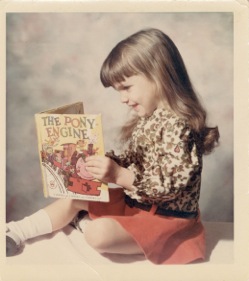
Of course I value and welcome innovation. I mean, stretch jeans, Trevor Noah, seedless watermelon, hybrid cars, hoppy IPAs, marriage equality, iPods, everywhere kale—it’s all good. My complaint is that the protest “But that’s so old!” in response to my wearing a certain dress or listening to a certain album is a non-argument. It’s a logical fallacy to assume things have value simply because they’re new. This is the mindset that brings us Iggy Azalea, the grapefruit diet, and the iFart app.
I’m more impressed by that which stands the test of time.
Take Sandy Wood. She’s been announcing the two-minute radio feature “StarDate” since 1991. For 24 years, millions of people have tuned in every day to this broadcast from the University of Texas McDonald Observatory as Ms. Wood directs our attention to the night sky. Twenty-four years, and what’s changed? Pretty much nothing. (I was once so moved by Ms. Wood’s consistent performance that I decorated an Easter egg in her honor. My daughter collapsed in laughter and Snapchatted it to all her friends.)
The Simpsons first debuted in 1989, and Bart, Lisa, and Maggie are still 10, 8, and something like 9 months. These kids haven’t grown up because we don’t need them to. (I’ll never forget how we watched an early episode on New Year’s Eve in 1989—stopping the party for it because there were no DVRs—and roared because in real life, many of us worked for a maniacal man named Mr. Burns.)
Then there’s Saturday Night Live, which just celebrated its 40th anniversary. Sure, the comedians are different from 1975, but the format hasn’t changed. The same is true for Garrison Keillor’s “A Prairie Home Companion,” which, except for a few years, has been airing every week since 1974.
Of course, Dick Estell has them all beat. Since I was in diapers, Mr. Estell has been reading aloud newly released books in their entirety on his syndicated “Radio Reader” program from WKAR at Michigan State University. Since 1965. Yes, for fifty years. (It was through his voice that I discovered the novelist Jane Hamilton. If you haven’t read her, you should.)
But back to Jones Beach, where I spent nearly every summer day as a kid. I had an idyllic day there in June of this year, and here’s what I found: It’s the same as it ever was. I even experienced one quick, disorienting moment when I looked for the thermos of iced tea my mom used to always pack—the red one with the spouty thing that always got full of sand—before I remembered it was 2015. And that’s because, for as far as the eye could see, it might as well have been 1975.
Most fields (as the individual beaches are called) have changed little since the park opened in 1929. Yeah, there’s some Trump thing at Central Field, but that’s easily avoided. Field 6, like the others, still has its low-slung building with the sandy bathroom, a concession that smells of coffee and French fries, a place to rent the same green-and-orange striped umbrellas, and a lifeguard shack.
The water’s still dirty. (How is it that a handful of ocean water looks clear but you can’t see your feet?) People still parade around mostly naked. (It’s amazing how people who wouldn’t be caught dead scantily clad in their own backyards will bare it all at the beach.) Young guys still sell ice cream. (Now they push big-tired carts instead of hauling around Styrofoam coolers.) The cars are smaller, the radios larger, and the skin more tattooed, but none of this adds up to much. It’s really just the same.
Yes, things change, because they must: Technology improves, resources grow scant, we get bored, we evolve. But let’s take a moment to appreciate those rarities that don’t change because someone got it right the first time.




 RSS Feed
RSS Feed
